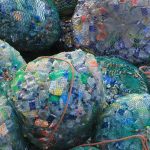
 Joe Wiart
Joe WiartThis website uses cookies. You have the possibility to accept or refuse their use.
Accept allReject allLearn more and configureWe may request cookies to be set on your device. We use cookies to let us know when you visit our websites, how you interact with us, to enrich your user experience, and to customize your relationship with our website.
Click on the different category headings to find out more. You can also change some of your preferences. Note that blocking some types of cookies may impact your experience on our websites and the services we are able to offer.
These cookies are strictly necessary to provide you with services available through our website and to use some of its features.
Because these cookies are strictly necessary to deliver the website, you cannot refuse them without impacting how our site functions. You can block or delete them by changing your browser settings and force blocking all cookies on this website.
These cookies collect information in a compiled manner to help us understand how our site is used and how well our marketing efforts are performing, or to help us personalize our site to improve your browsing experience.
< br>If you do not want your visit to be tracked on our site, you can block this tracking in your browser here:
We also use different external services like Google Maps and external Video providers. Since these providers may collect personal data like your IP address we allow you to block them here. Please be aware that this might heavily reduce the functionality and appearance of our site. Changes will take effect once you reload the page.
Google Map Settings:
Vimeo and Youtube video embeds:
